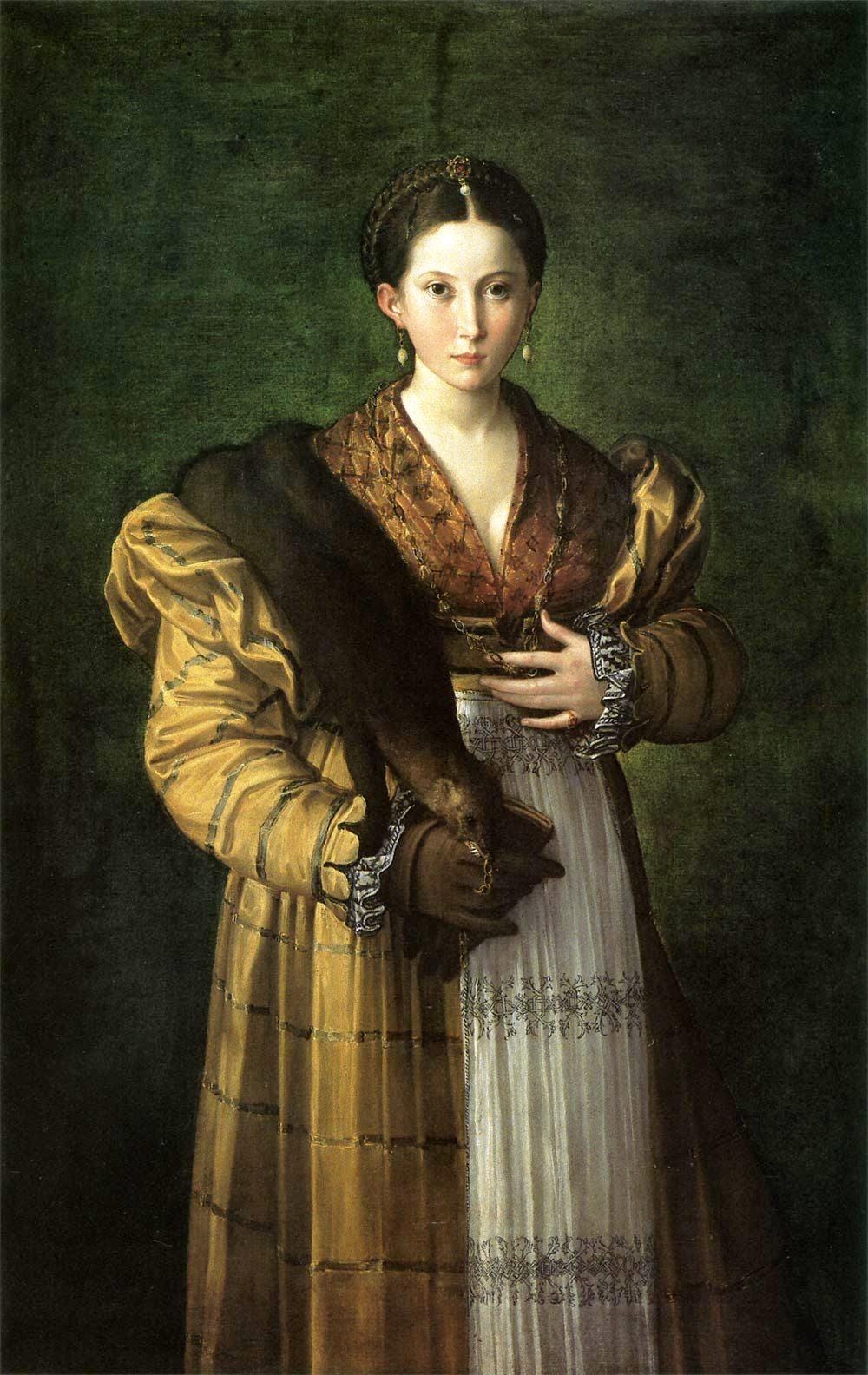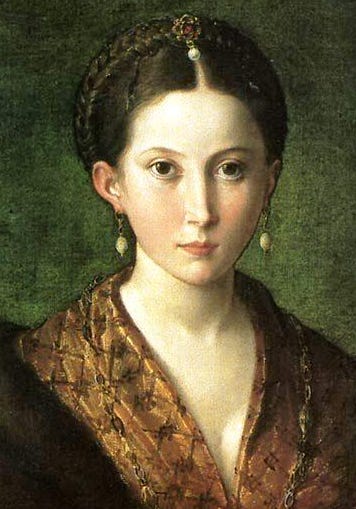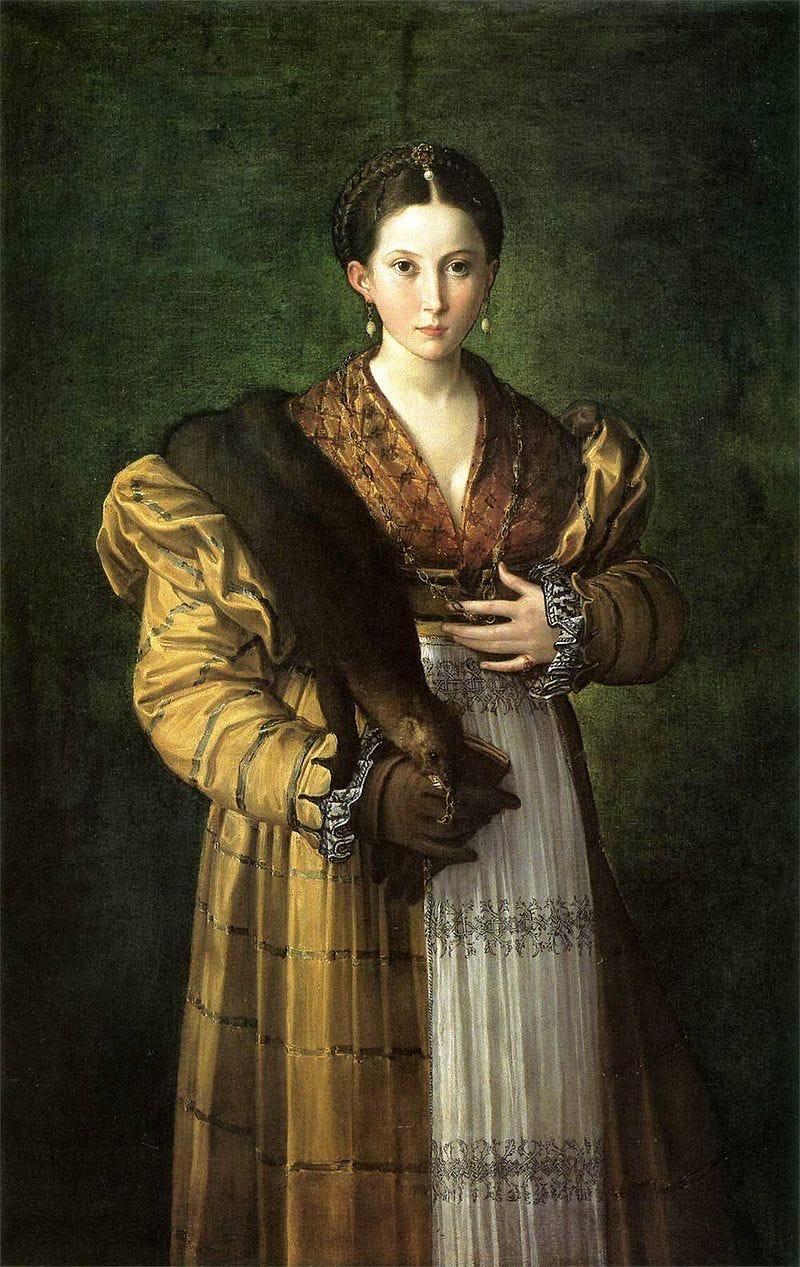Much like Leonardo da Vinci’s Mona Lisa or Johannes Vermeer’s Girl with a Pearl Earring . . . Parmigianino’s Antea is a portrait made even more captivating by its sheer mystery.
Painted when the artist was only 22 years old, she is arguably the most beautiful figure in his entire oeuvre. But, even more than her beauty, it is her sheer life-force which really captures the attention.
You see, despite her apparent youth, Antea has such a defiance, and a gravitas, and a sense of authority about her too. . . in many ways, mirroring the prodigious gifts of her creator.
And while most other female portraits of the period were posed more demurely - perhaps sitting down, with the model either depicted from the side (i.e in profile), or in a kind of three quarter pose - Antea’s stance is far more regal.
Standing head on, and staring directly out at us - it is as if those flawless brown eyes are learning far more about us than we can ever know about her.
Of course, there have been all kinds of theories put forward over the years about who she was, or why Parmigianino painted her.
For example, the artist/author Giacomo Barri (writing more than 130 years after the picture was completed) believed her to be a Roman Courtesan known to history as “Signora Antea”. Whereas other scholars have suggested she may in fact be Parmigianino’s own mistress, painted here for his personal collection. . . which, admittedly, still could work alongside Barri’s idea too.
But at the same time, it’s worth noting that this work is fairly large in size at 136 cm × 86 cm (i.e 54 in × 34 in).
Thus, considering the time the work would have taken - not to mention the expensive costs of oil paints and other materials too - it would actually be highly unusual for an artist as young as Parmigianino to paint something at this scale simply for his own pleasure.
So with that in mind, it is just as likely to imagine that Antea could have been painted for an unknown patron instead - perhaps intended as an ancient queen, or a kind of idealized beauty rather than being specifically based on a particular individual.
Whatever the case may be, it does feel as if every item adorning her is a symbolic clue to her identity.
From the pearly earrings and other expensive jewels, to her Spanish style of dress, to the very strange edition of her pet ermine biting at her glove (which many perceive as a possible nod to Leonardo da Vinci’s “Lady with an Ermine”) . . . the whole portrait is teeming with enigma.
And perhaps that is another reason why there appears to be that hint of a scornful grin on Antea’s face here too.
It is almost as if she is thinking:
“For four hundred years, people just like you have been noticing all of this, and still failing to know my secrets. But . . . Go ahead! Try to know me. See if you can succeed, where so many others have failed before.”








I don't think that ermine is a pet, or alive. I think it's one of those fur pieces that included the head. As recently in the 1960s my grandmothers had scary things like that, which they wore to church.
I really enjoy all the detail in this painting. The accessory on her parted hair with the dangling part almost looks like a mirror to me. Unfortunately with my eyesight I can’t enlarge it enough. I like your quote of what she might have been thinking. As always I’m so glad I happened upon you and became a subscriber.